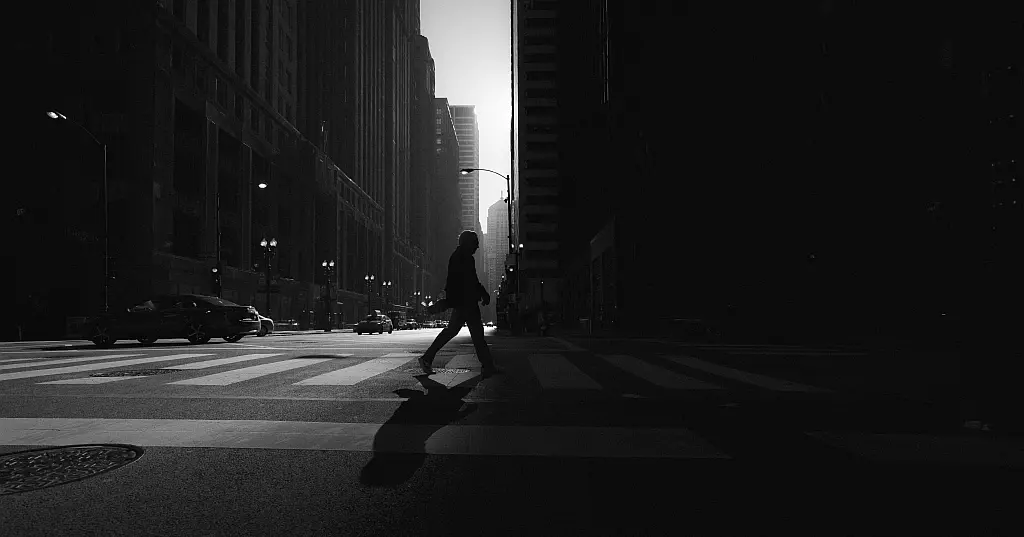
11 September 2025
Content warning: suicide, self-harm, crisis
If these topics are triggering for you, consider whether you’d like to proceed now, and take care of yourself while reading. You can pause at any time. It’s okay to step away, breathe, or come back later. If you continue, you may encounter references to suicidal thoughts, methods, and personal distress.
If you’re in immediate danger
Call your local emergency number now:
- Germany: 112
- Luxembourg: 112
Support right now
Germany
- TelefonSeelsorge: 0800 111 0 111 | 0800 111 0 222 | 116 123 (free, 24/7) — Chat & email
- KrisenChat (text/WhatsApp/Signal): krisenchat.de (24/7)
- Emergency: 112 (for immediate risk)
Luxembourg
- SOS Détresse – Helpline: 45 45 45 (daily; hours vary) — Chat
- Ligue Santé Mentale: 45 55 33 — prevention-psy.lu
- Emergency: 112 (for immediate risk)
other countries
Find other countries: findahelpline.com
Tips for safer reading
- Read in a safe, comfortable place.
- Ground yourself: notice five things you can see, four you can feel, three you can hear, two you can smell, one you can taste.
- Have a support plan: a person you can message, a coping activity (music, breathing, a short walk), and a helpline saved in your phone.
You’re not alone. If this content is hard, your feelings are valid, and help is available.
National Geographic (2025) ¦ Remembering 9/11: Aftermath of a National Tragedy ¦ 24th Anniversary Mega Episode
Remembering 9/11: Aftermath of a National Tragedy
Gander’s calm that became a lifeline
On the morning of September 11, 2001, the usually quiet control rooms of Gander International Airport in Newfoundland transformed into the front line of an unprecedented global aviation emergency. Controllers like Dwayne Puddister and Harold O’Rielly awoke to images on television showing one plane, then another, striking the World Trade Center. Within minutes the decision cascaded from national operations: U.S. airspace was closed. Gander, by virtue of geography and its long history as a North Atlantic waypoint, became a funnel for wide‑bodied aircraft carrying hundreds of passengers. In a matter of hours the town that once served as a refueling stop during the Second World War was asked to receive dozens of heavy jets — a scenario for which it had no precedent and virtually no time to plan. The narrative from Gander is one of improvisation, coordination and steady nerves. Controllers who had been handling minimal traffic suddenly managed a stream of aircraft diverted from transatlantic tracks. They set up ad hoc arrival profiles, assigned parking on aprons and even on abandoned wartime runways, and worked with tower and ground crews to keep runways clear and safety paramount. Pilots, anxious and overweight with extra fuel, were vectored into holding areas to dump fuel safely before landing. The airport and the community absorbed a logistical burden that demanded split‑second decisions: which planes to land where, how to sequence approaches, and how to balance safety against the psychological and security risks of opening aircraft to passengers.
What stands out in these accounts is the human resolve and disciplined teamwork. Controllers who normally worked quiet morning shifts found themselves coordinating by voice, hand‑drawing sequences when electronics could not keep pace. Off‑duty controllers drove to the center unprompted to help. Ground crews, airport managers and volunteers pooled resources and improvised parking plans. For many involved, that day became a defining professional moment — an unplanned emergency that tested systems, training and character, and, by every account, was met with courage and competence.
From Manhattan to Shanksville and the Pentagon: immediate chaos, lasting scars
The documentary moves seamlessly from Gander to the visceral experiences in New York, at the Pentagon and in rural Pennsylvania. Personal testimonies capture the immediacy of shock and the frantic process of survival and rescue. Office workers describe the surreal moment when buildings swayed and paper rained like snow. Firefighters, police officers and ordinary civilians recall the decision to run toward danger rather than flee it. Those who were in the towers recount narrow escapes, desperate stairwell descents, and the haunting images of people choosing to jump rather than face the fires. First responders recall the crushing noise of collapse, the choking dust, and the transition from rescue to recovery as heavy beams and rubble made further rescues impossible.
Shanksville carried its own grim clarity: first responders found a scene so devastated that there was no possibility of human survival. In the confusion and chaos, hospitals and emergency services had to prepare for mass casualties while confronting shortages, logistical unknowns and the psychological toll of repeatedly witnessing death.
The human toll threaded through these narratives is not only immediate. Survivors and rescuers later described chronic health problems — respiratory illness, cancer, gastrointestinal disorders — linked to exposure at Ground Zero. Recovery workers lived with nightmares, guilt and the persistence of trauma. For many families, including those of employees of Cantor Fitzgerald and other firms that lost entire workforces on high floors, the wound was both public and painfully private: names on lists, days of waiting, and the agonizing incompleteness for thousands of victims who were never recovered.
Small acts of heroism, big losses of life
Individual stories anchor the national catastrophe in the intimate. Carmen Rivera, a vice president in the World Trade Center and mother of three, stayed behind to guide coworkers down the stairs; her husband Luis detailed years of searching, the hope of finding her alive, the agony of receiving confirmation through fragmentary remains and DNA testing. Parents, children, colleagues, and friends show how grief reshaped ordinary lives — how anniversaries, photographs, and memories became means to preserve someone’s name. The documentary emphasizes that for many survivors and families, the need to remember is not merely commemorative but an active duty: to say names, to tell stories, to pass on the memory of courage.
The footage and interviews also highlight the instincts of first responders: the firefighters and police who ran into burning towers and collapsing structures. Many lost their lives; many more later suffered from illnesses tied to the toxic environment. Their professionalism and sacrifice remain central to the day’s legacy.
Osama bin Laden unplugged: the hard drive archive and the mind behind the attack
The documentary turns to the post‑9/11 pursuit of Osama bin Laden and the trove of materials recovered from his Abbottabad compound after his death in 2011. What emerges from the digital archives is a portrait complex and deeply contradictory. On one hand, there are mundane family videos, children’s programs and home footage that present an image of a domestic atmosphere, a grandfather’s life separated from the world. On the other hand, there are propaganda films, violent imagery, correspondence about operations and communications that illuminate the operational thinking of Al Qaeda.
Experts who examined the drives stress caution in interpretation: files can be misleading, practically ambiguous, and contaminated by materials from other users. Still, patterns are instructive. The recovered documents and videos show a leader fixated on messaging and image, often rehearsing and carefully crafting public statements; a man who presented humility yet cultivated a carefully managed persona. Analysts identify a disturbing institutionalization of violence: children being taught martial phrases and poems, and adults using religion and rhetoric to justify atrocities. The drives also reveal paranoia — surveillance of the compound’s surroundings, fears of tracking devices, and a shrinking world constrained by distrust.
Those who knew bin Laden earlier in his life or studied his writings offer a consistent judgment: he combined religious language with political grievances to rationalize violence, and he cultivated charismatic authority that attracted followers. Even held up against his own stated religious vocabulary, experts argue, his interpretations were revisionist and self‑justifying. The result was an ideology with deadly reach. Removing bin Laden did not erase the movement or its influence; scholars in the film note that extremist currents have persisted and mutated, and that groups like ISIS in some ways carry forward the narrative of violent extremism.
Rebuilding, remembrance, and the long after
In the years since 2001, the documentary traces both personal and civic efforts to remember and rebuild. St. Nicholas Greek Orthodox Church — crushed by the south tower’s collapse — became a symbol of endurance and eventual renewal. Ground Zero itself evolved into a memorial and museum space meant to enshrine names, offer a place of reflection, and maintain a public record of loss and heroism. For survivors, rescuers and families, these public acts of remembrance are complemented by private rituals: balloons, family recollections, and spaces where grief can be voiced.
The film emphasizes the ambivalence of legacy. While Osama bin Laden’s death and the seizure of his files closed a chapter, the ideological damage and human cost endure. For many in the United States and around the world, 9/11 remains a dividing line in life — an event that changed security protocols, foreign policy, and daily experience. It also foregrounded acts of compassion: strangers housing diverted passengers in Gander, volunteers aiding families, and communities rallying to support those left behind. That combination of horror and heroism is the enduring image conveyed by the documentary.
A complicated memory, a continuing responsibility
Remembering 9/11 is necessarily layered: procedural accounts of air traffic control and emergency response, intimate testimonies of loss and survival, forensic examinations of the man who claimed responsibility, and reflections on how societies respond to violence. The documentary does not simplify these threads. Instead, it presents a mosaic in which the technical feats of controllers in Gander coexist with the profound human costs in New York, the Pentagon and Shanksville; where the banality of family life in bin Laden’s compound contrasts with the extremism he propagated; and where public rituals of remembrance intersect with private, ongoing grief.
What the film makes clear is that the aftermath of that day extended far beyond the immediate rescue and recovery. It reshaped lives, health, politics and collective memory. The stories it gathers call for continued attention: to honor those who responded, to support survivors and families, to reckon honestly with the causes and consequences of extremism, and to preserve the names and narratives of those who were lost. In the telling and retelling of these accounts, the documentary underscores a moral imperative: to remember fully, to learn where we can, and to keep saying the names of the dead so they do not fade into silence.


